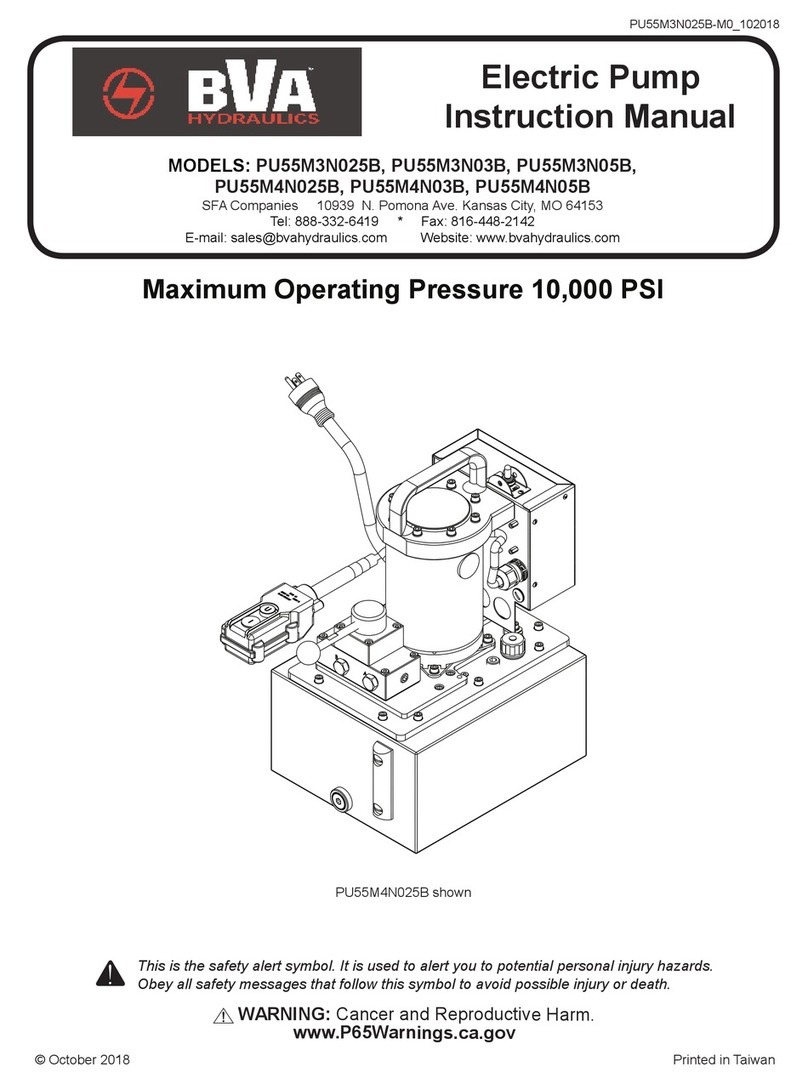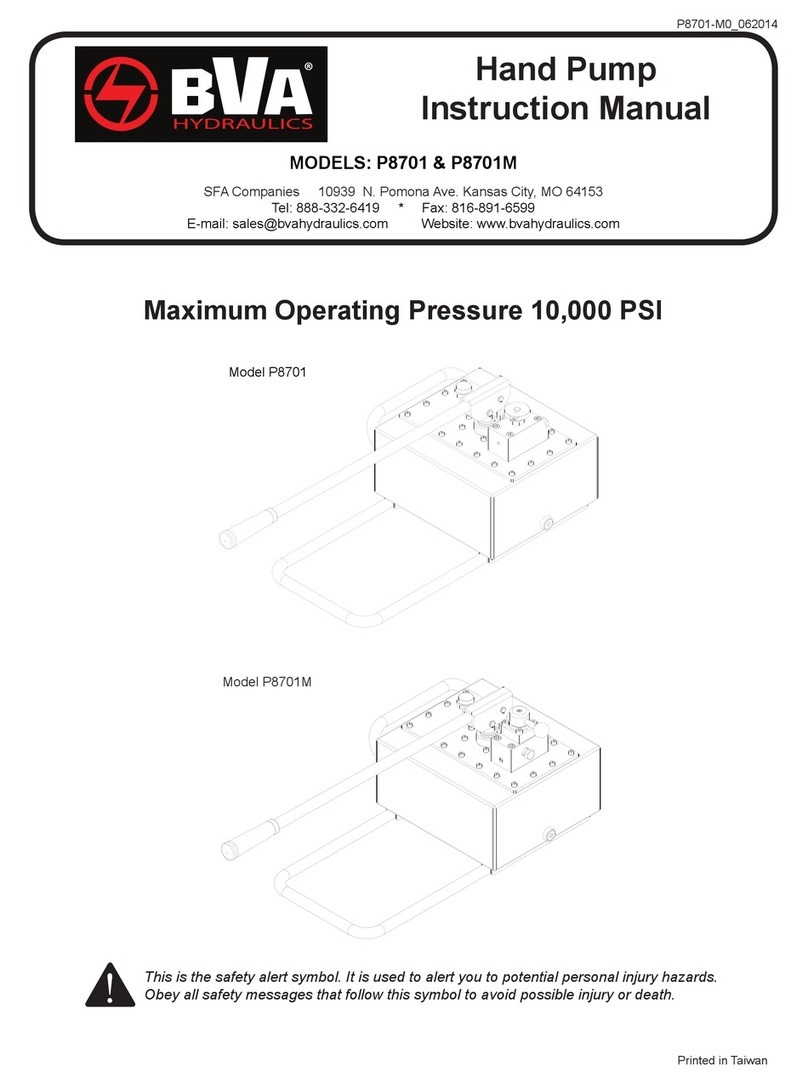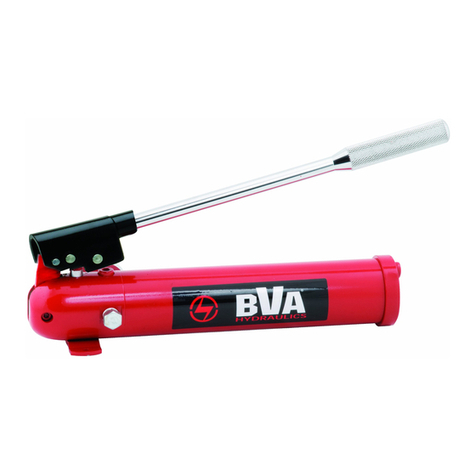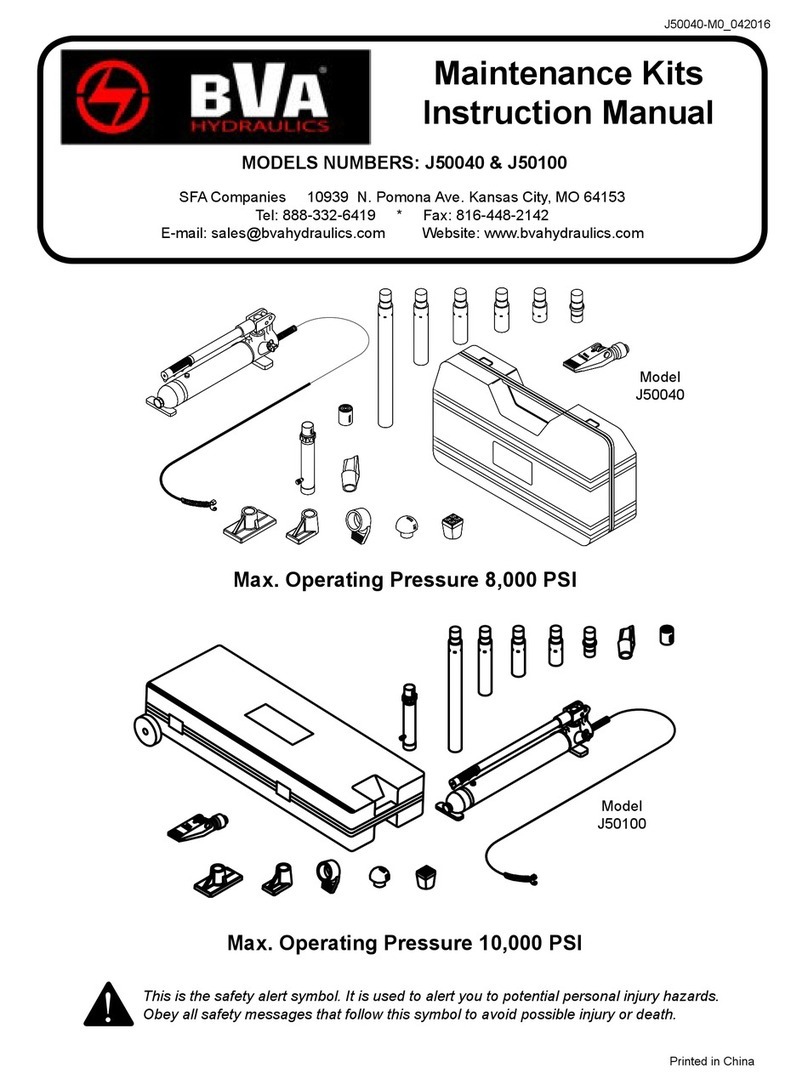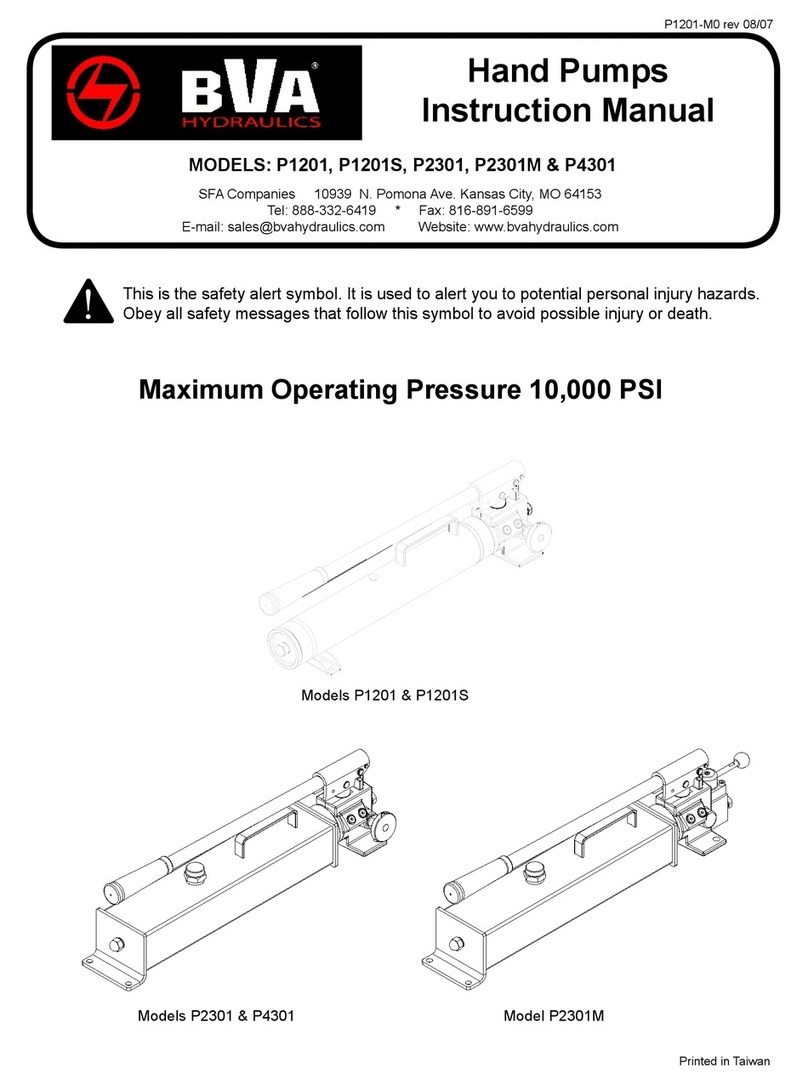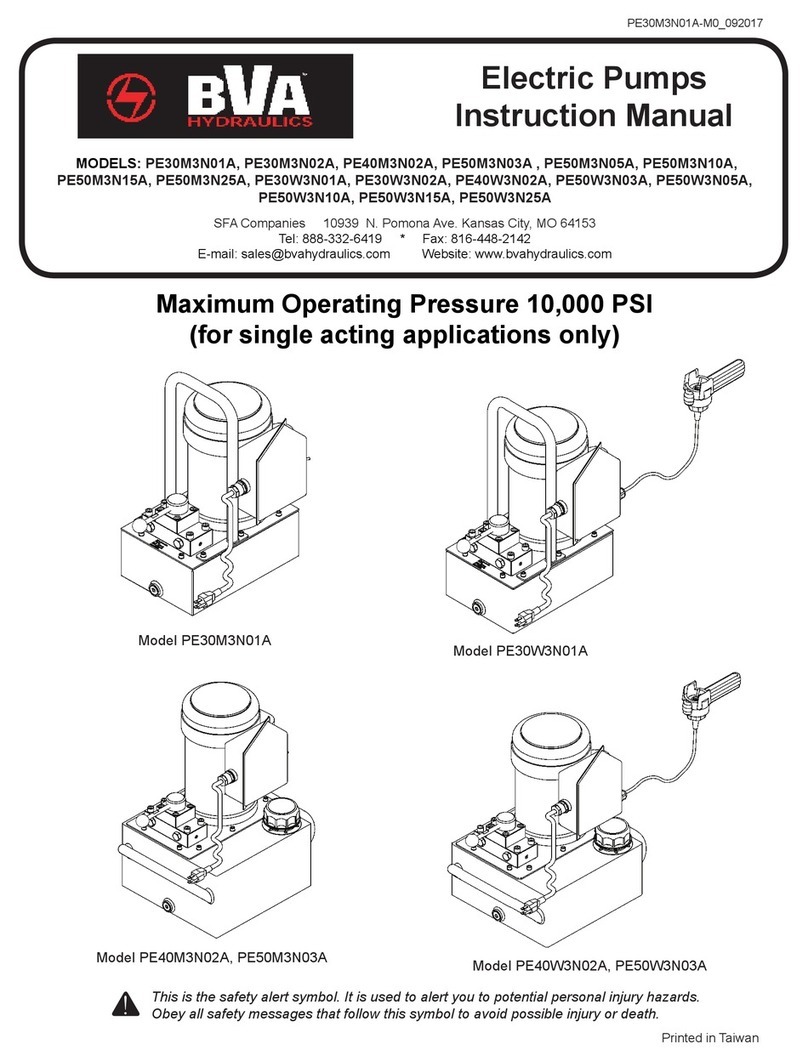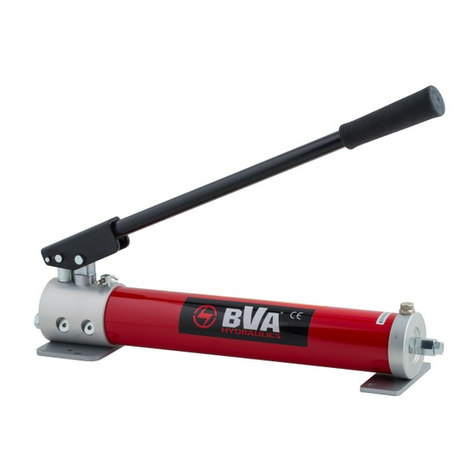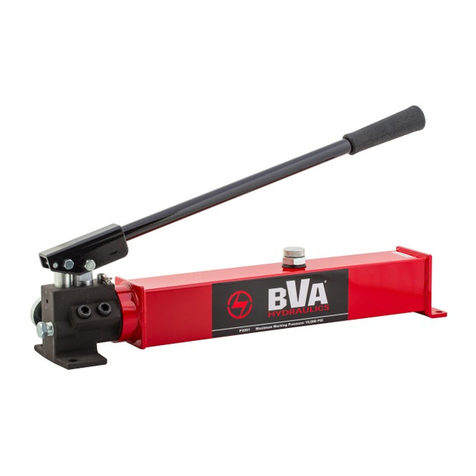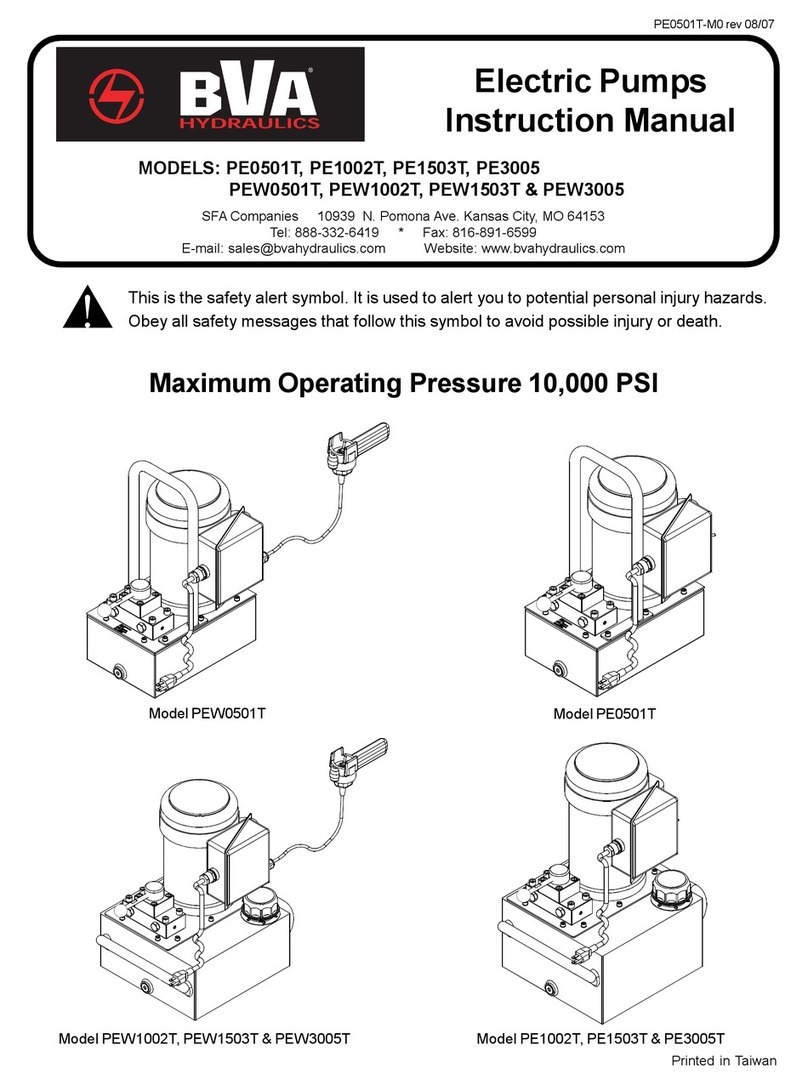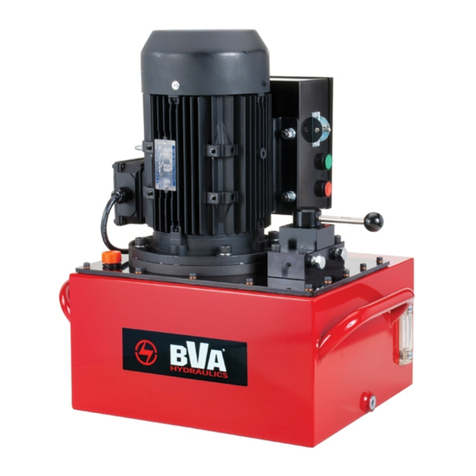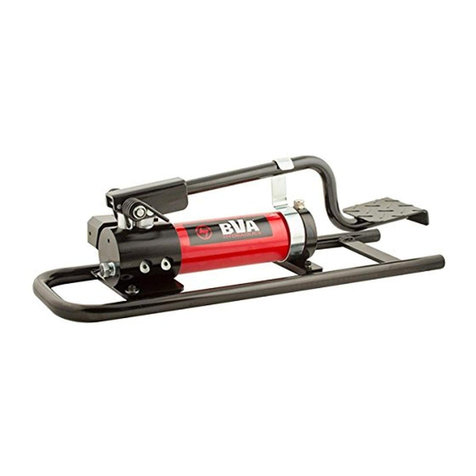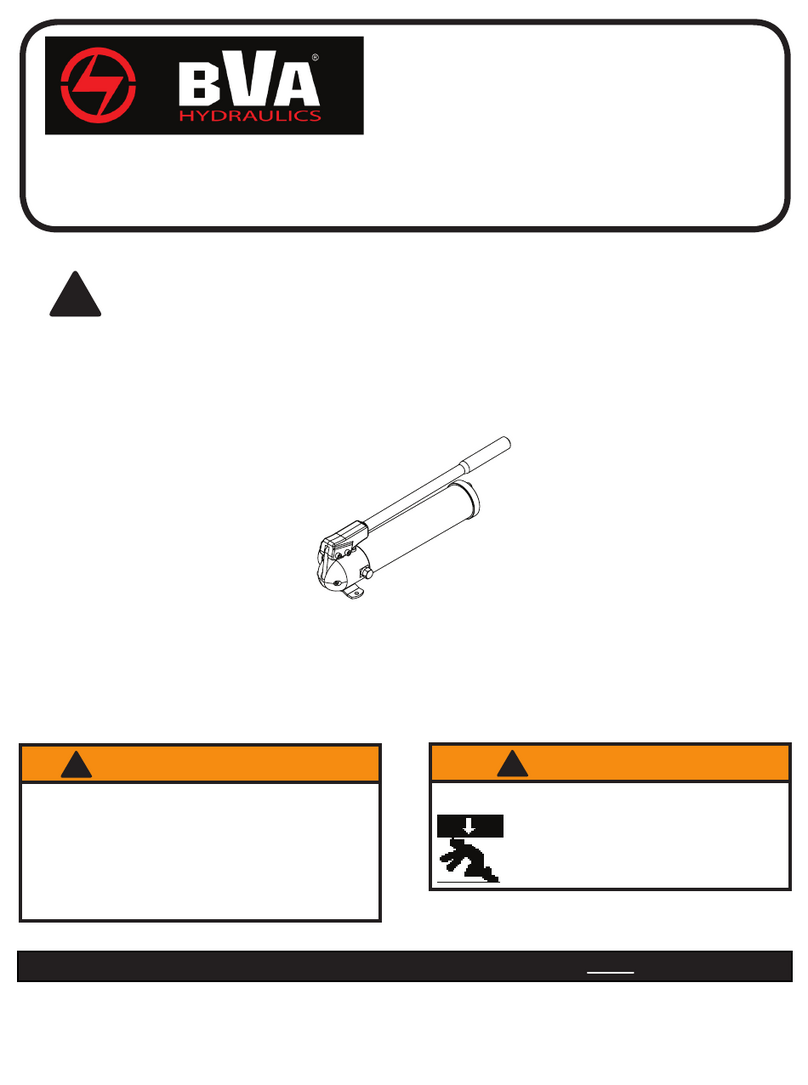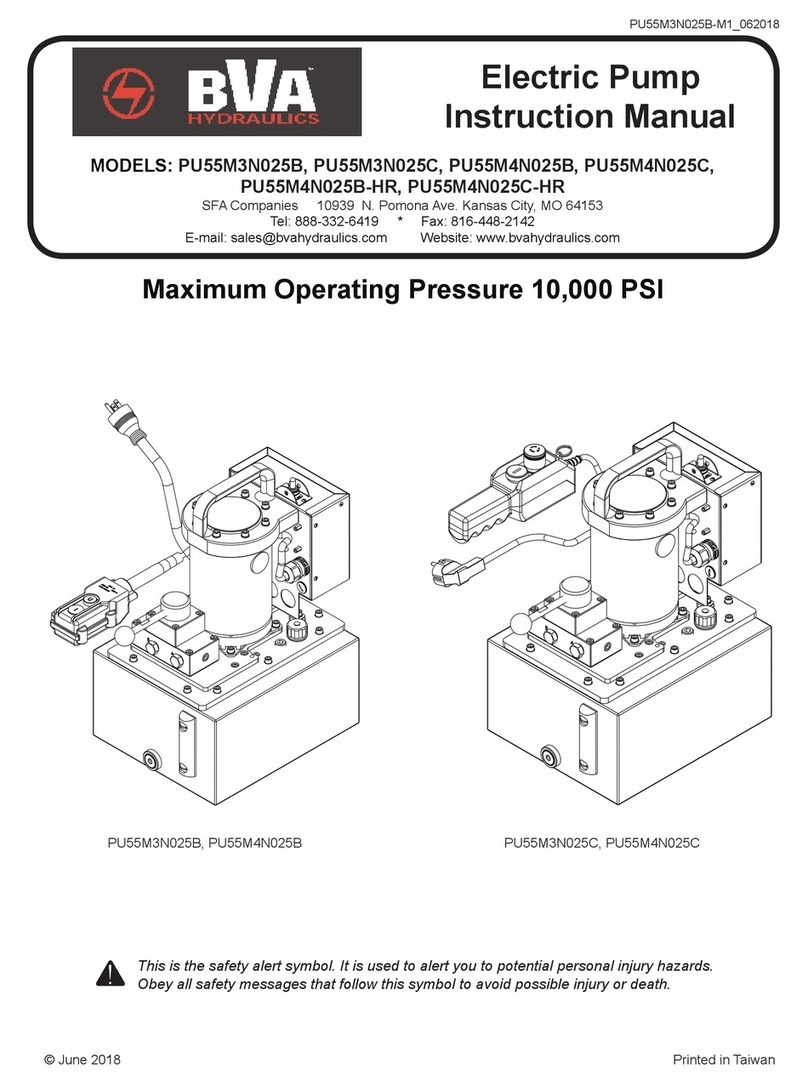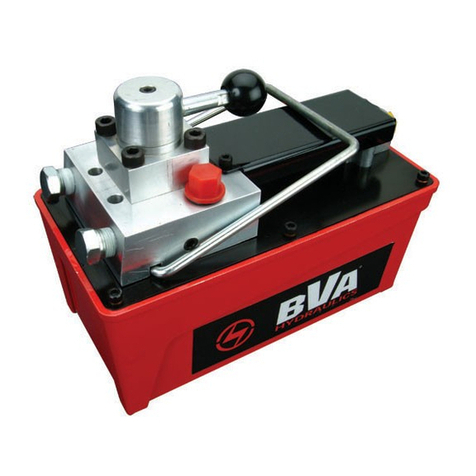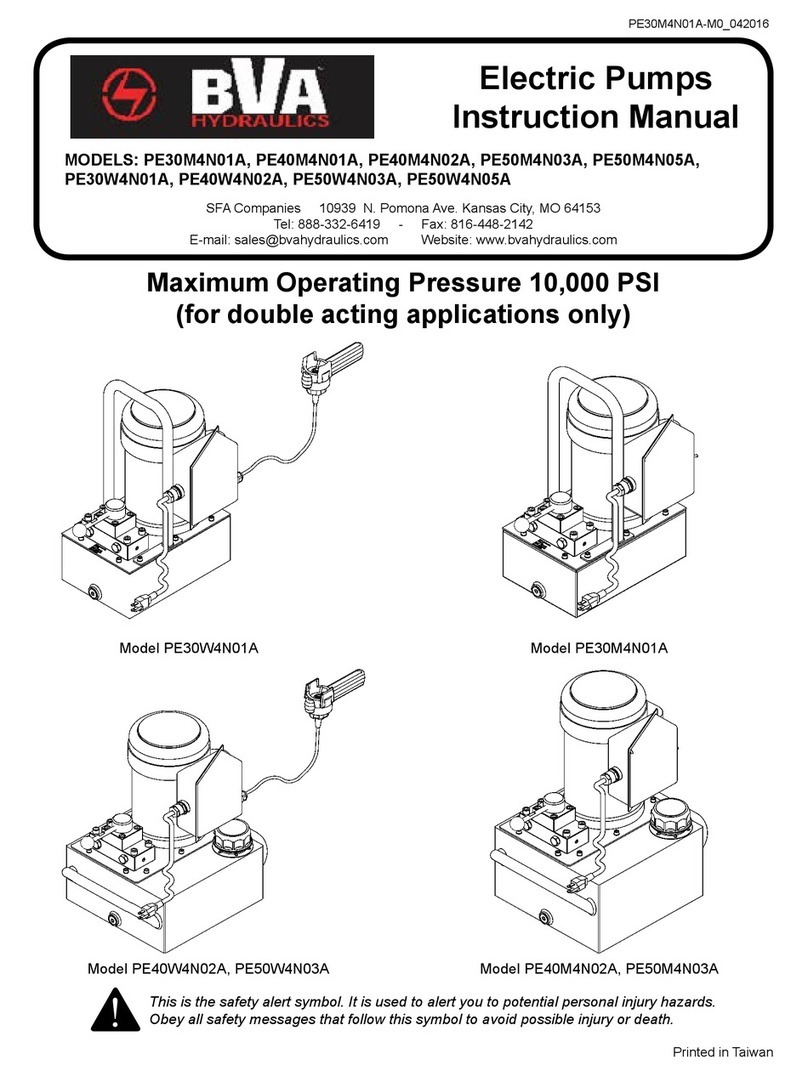
• Study, understand, and follow all
instructions provided with and on this
device before use.
• All WARNING statements must be
carefully observed to help prevent
personal injury.
•
No alteration shall be made to this
device.
• Always wear protective gear when
operating hydraulic equipment.
• Keep hydraulic equipment away from
ames and heat. Hydraulic uid can
ignite and burn. Do not operate if leaks
are detected.
•
Crush Hazard. Keep hands and feet
away from loading area. Avoid pinch
points or crush points that can be
created by the load, cylinder, or any
equipment of system.
•
To avoid crushing and related injuries:
NEVER work on, under or around a
lifted load before it is properly supported
by appropriate mechanical means.
Never rely on hydraulic pressure alone
to support load.
HYDRAULIC PUMPS
•
The user must be a qualied operator familiar with the correct
operation, maintenance, and use of pumps. Lack of knowledge
in any of these areas can lead to personal injury.
• Do not exceed rated capacity of the pump or any equipment in
the system.
• Never attempt to lift a load weighing more than the capacity of
the cylinder.
• Do not subject the pump and its components to shock loads.
• Burst hazard exists if hose or connection pressure exceeds
rated pressure.
•
Inspect pump, cylinder, hoses and connections before each use
to prevent unsafe conditions from developing. Do not use if they
are damaged, altered or in poor condition. Do not operate the
system with bent or damaged coupler or damaged threads.
• Never hold or stand directly in line with any hydraulic
connections while pressurizing.
•
Use gauge or other load measuring instrument to verify load.
• Never attempt to disconnect hydraulic connections under
pressure. Release all line pressure before disconnecting hoses.
•
Use only approved accessories and approved hydraulic uid.
•
Never attach ANY component not authorized by manufacturer.
• Always ensure that the chosen application is stable to work on
and around.
• Do not connect to application which can return more oil to the
reservoir than the pump reservoir can hold.
• Do not connect pump to hydraulic system powered by another
pump.
• This device is not suitable for use as support device! As
the system load is lifted, use blocking and cribbing to guard
against a falling load.
• All personnel must be clear before lowering load or
depressurizing the system.
• Never try to disassemble a hydraulic cylinder, refer repairs to
qualied, authorized personnel.
HYDRAULIC HOSES & FLUID TRANSMISSION LINES
• Avoid short runs of straight line tubing. Straight line runs do
not provide for expansion and contraction due to pressure
and/or temperature changes.
• Reduce stress in tube lines. Long tubing runs should be
supported by brackets or clips. Before operating the pump,
tighten all hose connections with proper tools. Do not
overtighten. Connections should only be tightened securely
and leak-free. Overtightening can cause premature thread
failure or high pressure ttings to burst.
• Should a hydraulic hose ever rupture, burst or need to be
disconnected, immediately shut o the pump and release all
pressure. Never attempt to grasp a leaking pressurized hose
with your hands. The force of escaping hydraulic uid can
inict injury.
• Do not subject the hose to potential hazard such as re, sharp
objects, extreme heat or cold, or heavy impact.
• Do not allow the hose to kink, twist, curl, crush, cut or bend so
tightly that the uid ow within the hose is blocked or reduced.
Periodically inspect the hose for wear.
• Do not pull, position or move setup by the hose.
•
Hose material and coupler seals must be compatible with
hydraulic uid used. Hoses also must not come in contact with
corrosive materials such as battery acid, creosote-impregnated
objects and wet paint. Never paint a coupler or hose.
•
FAILURE TO HEED THESE WARNINGS MAY RESULT IN
PERSONAL INJURY AS WELL AS PROPERTY DAMAGE.
SPECIFICATIONS
Model
Usable
Oil
Capacity
(in3)
Pump Type
Pressure
Rating (psi)
Oil
Displacement
per Stoke
(in3)
Operating
Force
(lbs)
Mounting
Plate
Holes
Distance
(in)
Pump Size
(L x W x H)
Weight
(lbs)
1st
stage
2nd
stage
1st
stage
2nd
stage
P1201S 67
Single Speed S/A
10,000 0.14
89 3.74
23.07” x 5.24” x 6.73”
20.5
P1201 Double Speed S/A
200 0.81 99
P2301
134
3.54
23.98” x 5.31” x 6.81”
27.7
P2301M Double Speed D/A
27.44” x 4.72” x 6.81”
32.3
P4301
250
Double Speed S/A 3.74
22.87” x 5.31” x 7.68”
37.6
P4301M Double Speed D/A 26.34” x 5.32” x 7.68” 42.2
WARNING
!
3
